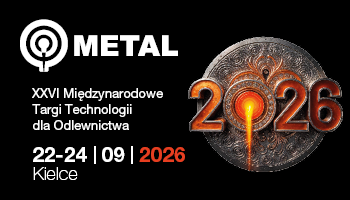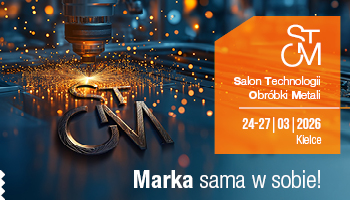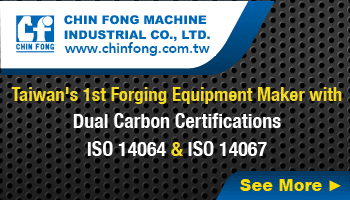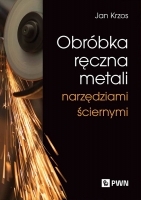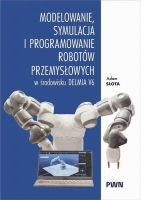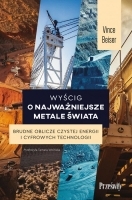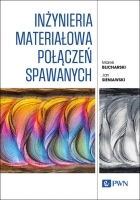Progress in structured and textured cutting tools. Part 1. New designs and methods of fabricating of structured and textured cutting tools
Postęp w strukturyzowaniu i teksturyzowaniu ostrza skrawającego. Część 1. Nowe konstrukcje i metody wykonywania mikroi- nanostruktur *
Mechanik nr 04/2022 - Narzędzia
ABSTRACT: This paper presents new designs of structured and textured working surfaces of cutting tools made of different materials such as HSS, uncoated and coated sintered carbides, and superhard materials (PCD and CBN). A review of applied fabricating techniques including: micro-grinding, micro-EDM, micro-ECM, laser surface technology (LST), focused ion beam (FIB) and photolithography is done. Some recently published data concerning research works in the area of fabricating micro-/nano-textures of different geometrical configuration and functionality are discussed.
KEYWORDS: structuring, texturing, cutting tools, micro-textures, nano-textures
STRESZCZENIE: W artykule przedstawiono nowe rozwiązania konstrukcyjne strukturyzowanych i teksturyzowanych powierzchni roboczych ostrzy skrawających wykonanych z różnych materiałów narzędziowych – stali szybkotnących, powlekanych węglików spiekanych oraz materiałów supertwardych (PCD i CBN). Dokonano przeglądu technik wytwarzania, w tym: mikroszlifowania, micro-EDM, micro-ECM, laserowej obróbki powierzchniowej, obróbki skoncentrowanym strumieniem jonów i fotolitografii. Omówiono wyniki ostatnio opublikowanych prac badawczych w zakresie wytwarzania mikro- i nanostruktur o różnej konfiguracji geometrycznej i funkcjonalności.
SŁOWA KLUCZOWE: strukturyzowanie, teksturyzowanie, narzędzia skrawające, mikrostruktury, nanostruktury
BIBLIOGRAFIA / BIBLIOGRAPHY:
[1] Grzesik W. „Tribologiczne efekty strukturyzowania powierzchni natarcia ostrza skrawającego”. Mechanik. 5–6 (2012): 418–423.
[2] Jarosz K. „A review of the recent investigations regarding texturized cutting tools”. Mechanik. 4 (2021): 6–9, https://doi.org/10.17814/mechanik.2021.4.7.
[3] Grzesik W. „Hybrydowe procesy skrawania wspomagane nanocieczami. Część 1: Właściwości i mechanizmy oddziaływania nanocieczy”. Mechanik, 2 (2020): 6–9, https://doi.org/10.17814/mechanik.2021.2.3.
[4] Grzesik W. „Podstawy skrawania materiałów konstrukcyjnych”. Warszawa: WNT, 2018.
[5] Őzel T., Biermann D., Enomoto T., Mativenga P. “Structured and textured cutting tool surfaces for machining applications”. CIRP Annals – Manufacturing Technology. 70 (2021): 495–518, https://doi.org/10.1016/j.cirp.2021. 05.006.
[6] Gajrani K.K., Sankar M.R. “State of the art on micro to nano textured cutting tools”. Materials Today: Proceedings. 4 (2017): 3776–3785, https://doi.org/10.1016/j.matpr.2017.02.274.
[7] Obikawa T., Kamio A., Takaoka H., Osada A. “Micro-texture at the coated face for high performance cutting”. Int. J. Machine Tools & Manufacture. 51 (2011): 966–972, https://doi.org/10.1016/j.ijmachtools.2011.08.013.
[8] Zhang K., Deng J., Meng R. et al. „Effect of nano-scale textures on cutting performance of WC/Co-based Ti55Al45N coated tools in dry cutting”. Int. Journal of Refractory Metals and Hard Materials. 51 (2015): 35–49, https://doi.org/10.1016/j.ijrmhm.2015.02.011.
[9] Fatima A., Mativenga P.T. ”On the comparative cutting performance of nature-inspired structured cutting tool in dry cutting of AISI/SAE 4140”. IMechE Part B: Journal of Engineering Manufacture. 231, 11 (2017): 1941–1948, https://doi.org/10.1177/0954405415617930.
[10] Narayanan S., Baskar N., Vedha Hari B.N. et al. “Performance of cutting tool with cross-chevron surface texture filled with green synthesized aluminium oxide nanoparticles”. Scientific Reports, www.nature.com/scientificreports.
[11] Alagan N.T., Zeman P., Hoier P., Beno T., Klement U. “Investigation of micro-textured cutting tools used for face turning of alloy 718 with high-pressure cooling”. Journal of Manufacturing Processes. 37 (2019): 606–616, https://doi.org/10.1016/j.jmapro.2018.12.023.
[12] Yang H., Han Z., Xia X., Wang Q. et al. “On the cutting force of micro-textured polycrystalline cubic boron nitride cutting toll for powder metallurgy materials”. Advances in Mechanical Engineering. 12, 7 (2020): 1–11, https://doi.org/10.1177/1687814020938496.
[13] Rathod P., Aravindan S., Paruchuri V.R. “Evaluating the effectiveness of the novel surface textured tools in enhancing the machinability of titanium alloy (Ti6Al4V)”. Journal of Advanced Mechanical Design, Systems, and Manufacturing. 9, 3 (2015): paper No. 15-00315, https://doi.org/10.1299/jamdsm.2015jamdsm0035.
[14] Singh B., Sasi R., Subbu S.K., Muralidharan B. „Electric discharge texturing of HSS cutting tool and its performance in dry machining of aerospace alloy”. Journal of Brazilian Society of Mechanical Sciences and Engineering. 41, 3 (2019): 41–52, https://doi.org/10.1007/s40430-019-1654-6.
[15] Hayasaka T., Sun P., Jung H., Mizutani Y., Shamoto E. „Proposal of ’ImpEC (impact excitation cutting) for realization of high-flexibility and high-efficiency micro/nano surface texturing”. CIRP Annals – Manufacturing Technology. 70 (2021): 41–44, https://doi.org/10.1016/j.cirp.2021.04.023.
DOI: https://doi.org/10.17814/mechanik.2022.4.4
* Artykuł recenzowany



.jpg)
